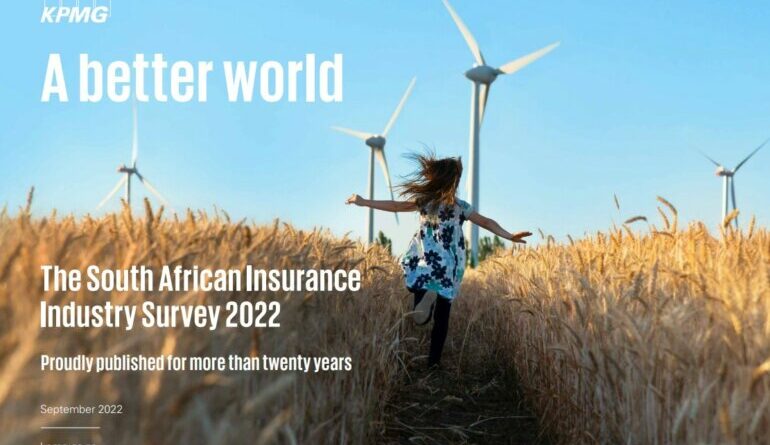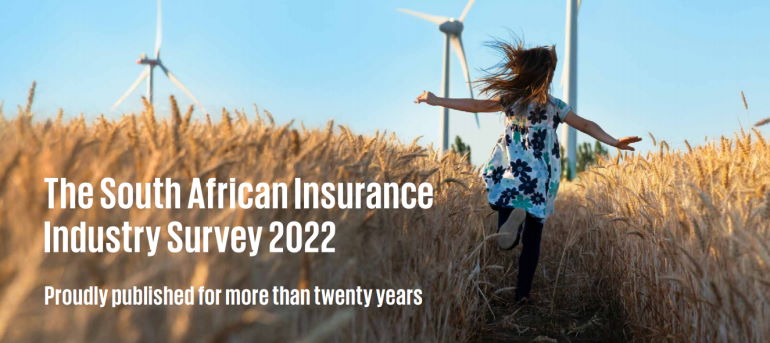KPMG Insurance Survey 2022: The insurance industry sees strong growth despite tough market conditions
South Africa today launched its annual South African Insurance Industry Survey for 2022. 34 non-life insurers, 19 life insurers and four reinsurers were surveyed. The results indicate that while the reinsurance market in South Africa has had a rough ride, the overall insurance industry has had a better-than-expected year – with strong gains in both the life and non-life sectors. However, there are some very real risks that face the sector over the next year and looking forward, including economic volatility, ever-increasing evidence of climate change, a much-needed focus on ESG reporting, support and understanding as well as an understanding of how to navigate South Africa’s social cohesion challenges.
“It is great to see in this year’s survey that the non-life and life insurers have bounced back nicely after the pandemic and have shown strong recovery at the top and bottom lines – creating a strong base from which the industry is able to enter what seems to be the end of the pandemic,” says Mark Danckwerts, Partner: KPMG Africa insurance practice leader.
Non-life insurance industry
Following the significant volumes and values of business interruption claims in 2020 because of the Covid-19 pandemic, the non-life insurance industry presented robust 2021 results, with the sector increasing profits by more than double the 2020 figures to R12.1 billion.
The industry reported gross written premiums (GWP) of R131.6 billion, an increase of 7% from the prior year. The ten largest non-life insurers, when measured on GWP, have a market share of 76.5%. There were marginal shifts in this space with Escap moving into the top ten, Centriq Insurance Company Limited moving down to the tenth position and Mutual and Federal Risk Financing Limited moving out of the top ten into the eleventh position.
GWP growth for the sector exceeded the headline CPI of 5.9%, with five insurers outperforming the GWP growth rate of 7%; these are Escap SOC Limited (Escap), Guardrisk Insurance Company Limited (Guardrisk), Discovery Insure Limited (Discovery), Bryte Insurance Company Limited (Bryte) and Lombard Insurance Company Limited (Lombard). Growth came from diversifying client bases and improved new business volumes. In this period Discovery Insure reported its lowest lapse rate since inception; 2% lower than the previous year.
The sector has shown incredible resilience by getting back to pre-pandemic results, with profit after tax increasing by 110% from R5.6 billion to R11.7 billion, largely as a result of a decreased industry loss ratio of 57% (61% in 2020).
“While the non-life industry has had a strong year – the pressure is on to remain resilient. Increasing crime, weather-related catastrophe events, the continued erosion of social cohesion in South Africa, and supply chain and power supply disruptions, all paint a picture that will require tenacity, skill and an increased focus on loss-preventing technology,” says Danckwerts.
Life insurance industry results
“While life insurers faced another turbulent year, the industry experienced improvements in the volume and profitability of the new business and welcomed a positive lapse experience and better equity and bond market performance. The industry demonstrated its resilience once again and was able to remain well capitalised to meet policyholder obligations,” says Danckwerts.
In 2020, several life insurers reported having paid or accrued for more claims than ever before, resulting in an overall loss of R5 billion. The life insurance industry has done well to return to profitability in 2021, reporting healthy profits of R17.1 billion. ASISA reported a 17% increase in new individual recurring premium risk policies and a reduction of 28.8% in lapsed policies.
“It is important to note, however, that for many life insurers’ results have not yet returned to pre-pandemic levels and these insurers would need to refocus efforts on other drivers of profitability such as digital innovation, cost optimisation and pricing reviews,” says Danckwerts.
Reinsurance industry results
While the primary insurance industry was sufficiently protected by the reinsurance industry through the robust reinsurance structures and arrangements in place, there is no doubt that the reinsurance industry bore the brunt of the loss events that occurred in 2020 and 2021. With GWP growth of only 1%, an 11% decline in investment income and underwriting losses from all surveyed reinsurers (R3.8 billion), it is safe to say that the reinsurers did not recover well following Covid-19 related business interruption claims from non-life insurers and increased mortality experience by life insurers.
“The reality is that while reinsurers writing life insurance risks were hit much harder than non-life insurance risks, it was a tough year all around for both. Consequently, we have seen the hardening of reinsurance rates in 2022.”
“This year’s survey has shown us once again how the insurance sector has, at large, shown resilience in the face of adversity – a trend that has continued after our previous survey. However, to remain agile, insurers are going to have to consider the role they play in mitigating risk, in dealing with risk brought about by changing technology, social patterns and economic turbulence and finding ways to innovate further to meet the unique challenges that the South African landscape presents,” concludes Danckwerts.





